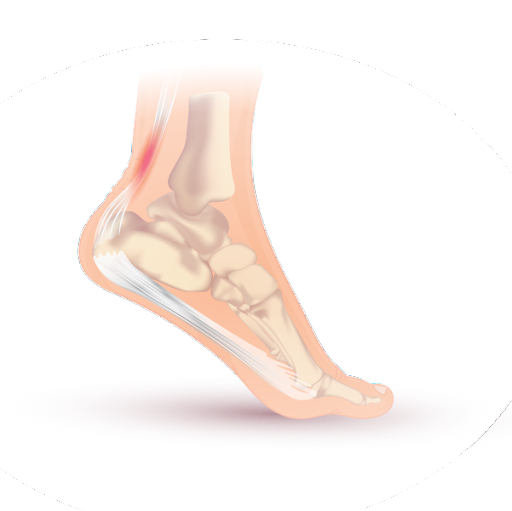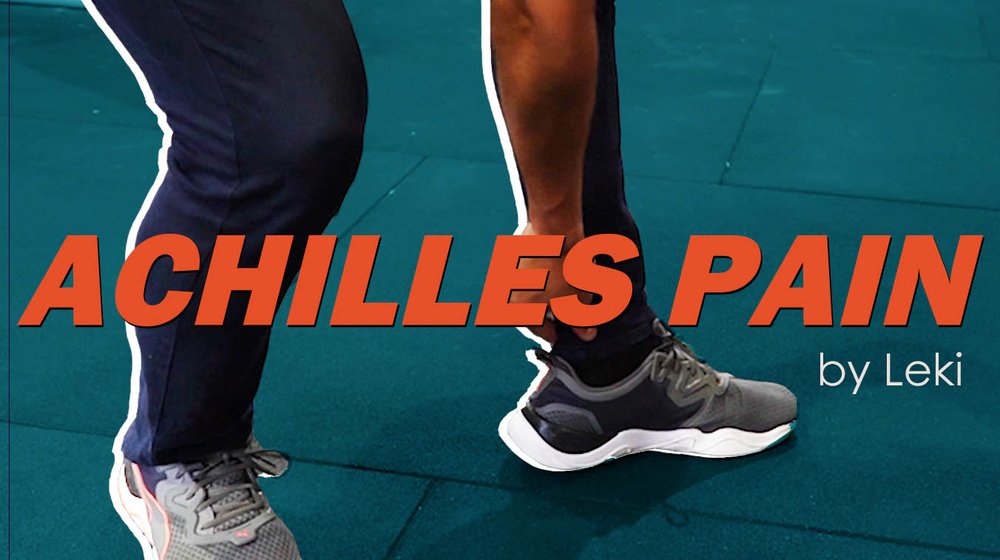It’s action (what does the Achilles tendon do?) – powerfully points your foot and helps with bending the knee.
Something we need to address are the common terms you hear with tendon pain – tendinitis, tendonosis and tendinopathy amongst other terms.
We will have a specific blog post on this very topic but for now let’s call any tendon problems – tendinopathy otherwise known as pathology of the tendon.
What I can tell you is the scientific and research community are still divided on the origin, cause and best rehabilitation protocols for tendon injuries so I’ll give you my experience on the front line as a private practice Physio with collision sport expertise for over 13 years.

What are two signs of Achilles tendinopathy?
This is my go to explanation: Mechanical and/or Inflammatory pain.
The structure of the tendon is one of tightly compacted fibres of collagen which have very strong tensile properties allowing a ‘spring like’ action.
If you overload, partially tear or completely tear the tendon it will give you a mechanical sign of pain, deformity and reduced or loss of function.
Inflammatory pain is the response to injury. Aching, pain, swelling, joint effusion and overload.
U. G. Emile et. al (2018)1 clarified that “the essence of Achilles tendinopathy is a failed healing response, with haphazard proliferation of tenocytes, some evidence of degeneration in tendon cells and disruption of collagen fibers, and subsequent increase in noncollagenous matrix” which translates to the disorganisation of the tendon at the cellular level.
It’s like building a house on sand. The foundations of the house are dodgy to say it best. Same thing with the tendon when it’s chronically overloaded, becomes degenerative and starts this cycle of pain and dysfunction.
The authors go on to highlight “tendinopathic tendons have an increased rate of matrix remodeling, leading to a mechanically less stable tendon which is more susceptible to damage!”

Can I walk with a strained Achilles tendon?
Great question!
When you are in pain the body is trying to save you from yourself. Now this is an individual response and we need to explore what the appropriate advice and treatment should be case by case.
This landmark paper by A. Kountouris and J. Cook (2007)2 reported that “Achilles tendinopathies affect a broad range of the population and are difficult conditions to manage clinically”… exactly my point! You need specific advice and treatment because not all cases are the same.
Here’s the rub from the authors: “Rehabilitation for Achilles tendinopathies is based on an exercise programme that aims to improve muscle–tendon function and normalise the pelvic/lower limb kinetic chain. This incorporates a programme for restoring and improving muscle strength, endurance and power and retraining sport-specific function.” So many gold nuggets!
So to answer your initial question of can I walk on a strained Achilles tendon? The literature suggests YES but get the appropriate help.
Can the Achilles tendon heal on its own?
There’s a systematic review published in 20143 which highlighted 139 articles from 1967 to 2013 on the pathology of the Achilles tendon. That’s a lot of evidence!
It simply stated that “the goal of treatment of patients with chronic Achilles tendinopathy is to relieve pain… inflammation plays a role in the early phases of the disease and non-steroidal anti-inflammatory drugs and steroids may be beneficial, but are usually ineffective later.”
Did you hear that guys? Don’t rely on over the counter anti-inflammatories!
Furthermore, this great research summary from the Australian Family Physician (2015)4 outlines some great protocols to follow in the context of heel pain.
It also goes through some evidence based and clinical opinion for management and treatment of Achilles tendon pain amongst other factors in heel pain.
My #1 Rehab Tool?
Exercise.
Specifically, a mixture of sustained isometric calf holds and slow eccentric work.

Now this is my own experience talking here because as you can see even the scientists in white lab coats are still unsure of the universal standard.
I would recommend this calf strengthening work starting from a flat surface to off a step, double to single leg with 2-5 sets of 15-25 repetitions in a pain free range of motion.
It’s not an exact science right now but we pay close attention to what the lab coats are seeing and we deliver that expertise to you.
Good luck and reach out if you need help with your Achilles tendon pain today!
#MakingHealthySimple
Leki Sisifa
References
1. U. M. Longo, M. Ronga and N. Maffulli Sports Med Arthrosc Rev 2018 Mar;26(1):16-30
2. A. Kountouris and J. Cook. Best Pract Res Clin Rheumatol 2007 Apr;21(2):295-316
3. B. Magnan, M. Bond, S. Pierantoni and E. Samaila Foot Ankle Surg 2014 Sep;20(3):154-9
4. E. Rio, S. Mayes and J. Cook Aust Fam Physician 2015 Mar;44(3):96-101

